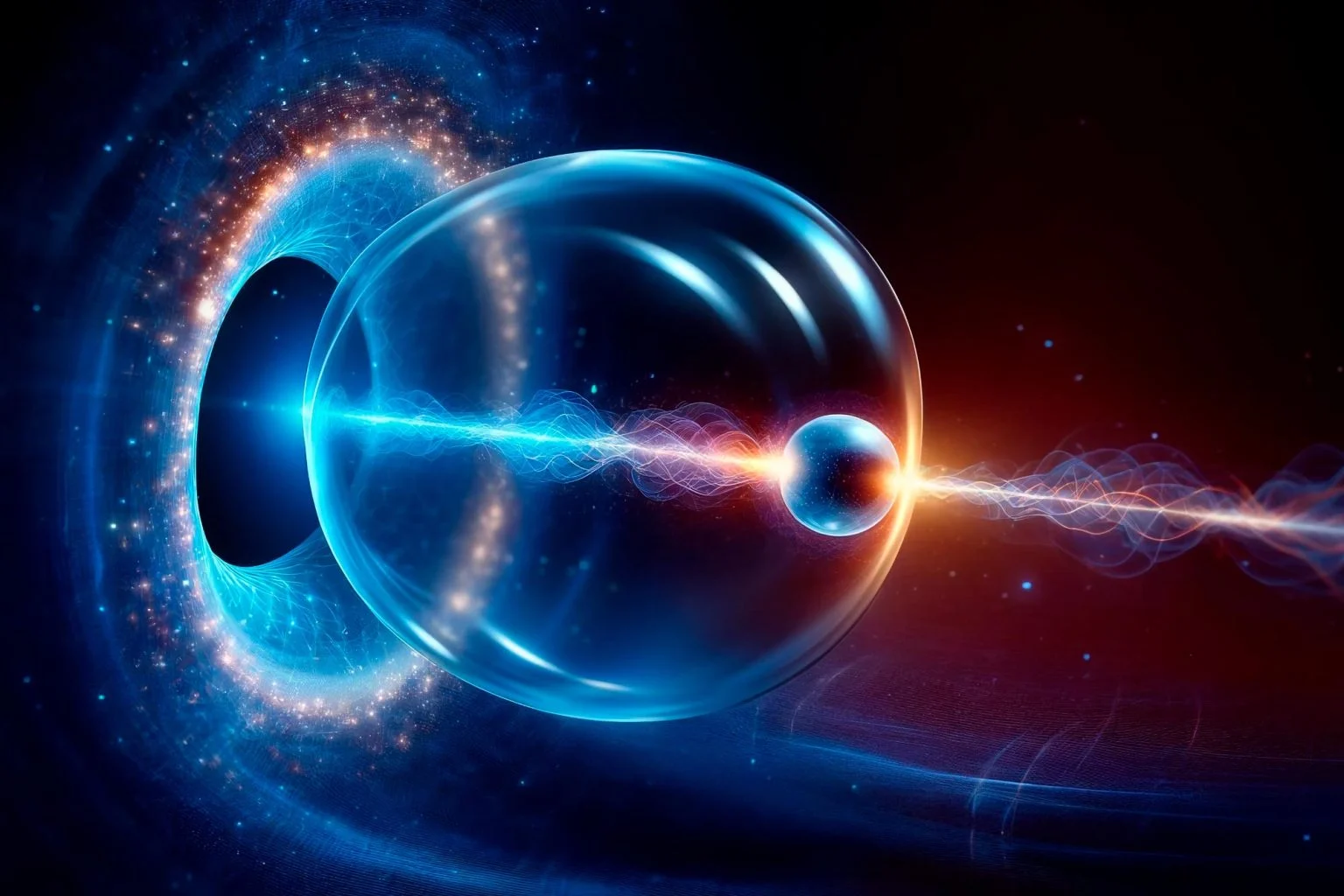"Quantum tunneling allows particles to bypass energy barriers. A new method has been proposed to measure the time it takes for particles to tunnel, which could challenge previous assertions of superluminal tunneling speeds. This method involves using atoms as clocks to detect subtle time differences. Credit: SciTechDaily.com" (ScitechDaily, Breaking Light Speed: The Quantum Tunneling Enigma)
Dimensions are energy levels. And if the energy level in some particles rises too high, that particle cannot exchange information between it, and the three-dimensional material. That state is the fourth dimension.
And one theoretical version of how to raise the energy level so high, that it jumps to the fourth dimension is to cross the speed of light. In some other models, the system drives photons or some other particle to the electromagnetic field or potential wall that raises its energy high enough in the critical moment.
When the particle's speed accelerates into high enough, it will get a nose. The nose forms because an electromagnetic shadow at the front of the particle stretches it. That nose is the shadow of the fourth dimension. A reason for that nose is when the particle's speed is high enough, they split quantum fields around them. At the front of the particle is a small, low pressure at the quantum field.
Otherwise, that quantum low pressure can pull the particle to the quantum channel. But the energy that starts to travel out from the particle closes that channel.
That nose forms when the particle starts to tunnel itself to the channel. The low-pressure tunnel pulls the particle inside it. When a particle travels through the quantum field it forms an energy wave around and in front of it. At a critical point, the particle loses its contact with quantum fields
At that point, it sends wave movement and when the particle starts to release its energy, its speed cannot accelerate. In some other models, the particle forms the energy wave that closes the quantum channel in front of it. And in that moment. The particle starts to release energy to that quantum field. Which pulls energy out of it. That denies the rise of the speed.
In the tunneling effect particle hits the potential wall. That potential wall pushes energy into that particle from its sides. As long as the particle receives more energy than it releases. The particle's energy level rises, and the speed of light is the level of kinetic energy. When a particle travels in the universe at the speed of light the top speed is the speed of a photon. Photon is the only particle that reaches the speed of light.
Speed means that the particle has a certain energy level. Crossing the speed of light during tunneling means that the particle's energy level is higher than it is at the speed of light.
When researchers try to make the particle tunnel itself through the speed of light, they might just make particle travel as fast as possible. Then they will press more energy to that particle from the sides. That thing allows the particle to keep the quantum tunnel open at the front of it. The thing that keeps the quantum tunnel open is the higher energy level at the particle.
When we think about quantum tunnels or wormholes the idea is that the particle forms an electromagnetic shadow at the front of it. That shadow pulls particles in the tunnel. The backside coming energy pushes the particle forward.
And the reason why that channel is open. Is the energy that comes from backward. If the particle is tightly in the tunnel it denies the electromagnetic radiation travel past it. That denies the scattering effect from the forward of the particle.
https://scitechdaily.com/breaking-light-speed-the-quantum-tunneling-enigma/
https://en.wikipedia.org/wiki/Four-dimensional_space
https://en.wikipedia.org/wiki/Quantum_tunnelling





No comments:
Post a Comment
Note: Only a member of this blog may post a comment.